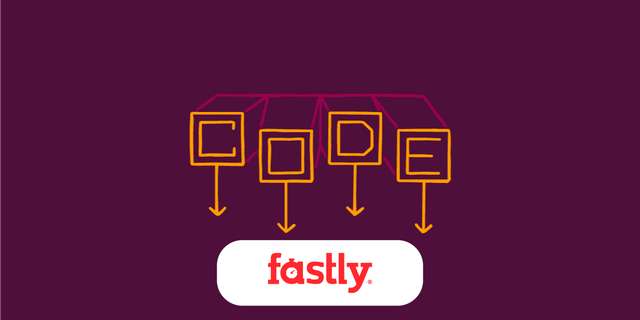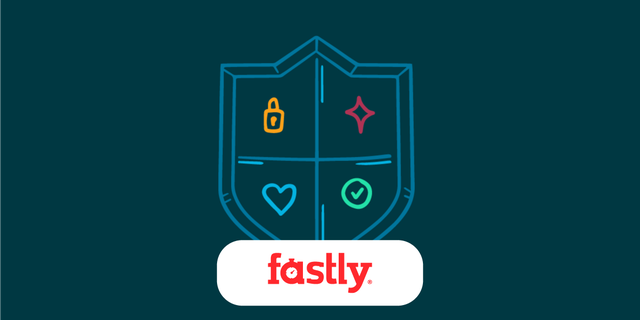Engineering
Page 2 of 9
-
How to Control and Monetize AI Bot Traffic Using Fastly and TollBit
David King, Lorraine Bellon
Monetize AI bot traffic! Fastly's Bot Management and TollBit have teamed up to offer granular control, performance, and flexibility to manage bots & unlock new revenue.
Security+ 2 more
-
Getting Started with TypeScript on Fastly Compute
Katsuyuki Omuro
Getting started with TypeScript on Fastly Compute is simple! Learn how to add static typing to your JavaScript projects for robust development.
Compute+ 3 more
-
Smarter Security Operations: Embracing Detection-as-Code
Simran Khalsa, Gary Harrison, + 1 more
Modernize security with Detection-as-Code. Learn how to automate threat detection & response using DevSecOps & tools like Fastly's WAF Simulator.
DevOps+ 2 more
-
Over a decade later: The evolution of instant purge
Tyler McMullen, Julien Benoist
Explore the decade-long evolution of Fastly's instant purge technology. Learn about our decentralized approach, challenges faced, and innovations in scalability.
Performance+ 2 more
-
We should still teach coding
Sue Smith
We should still teach coding, AI can't replace the critical thinking, creativity, and problem-solving skills that programming instills.
DevOpsEngineering
-
Building an actually secure MCP Server with Fastly Compute
Kay Sawada
Build a secure, scalable MCP Server with Fastly Compute. Learn to address vulnerabilities and ensure reliable performance for your LLM applications.
Compute+ 4 more
-
Protecting Against Scrapers with Fastly Bot Management
Brooks Cunningham
Protect your website from scrapers and unauthorized access with Fastly Bot Management. Secure cached content, prevent price undercutting, and protect SEO.
Platform+ 3 more
-
Using cURL to Test Origin Server Responses
Matt Torrisi
Curl, or cURL, is a utility that’s shipped by default on operating systems like MacOS and many Linux distributions that allows you to send an HTTP request to a URL and receive the result. In this post, we’ll walk you through how to use the tool to test an origin server’s response.
EngineeringPerformance
-
Making the Internet Sustainable— Starting from Its Infrastructure
Simon Wistow
Making the internet greener starts with its infrastructure. Learn how edge computing and smarter content delivery reduce energy waste and carbon impact.
CDN & Delivery+ 2 more
-
Modern Web Application Firewalls vs. Legacy: What Today’s Security Teams Need
David King, The Fastly Collective
Legacy WAFS can come with a lot of shortcomings, that's why when designing the Fastly Next-Gen WAF, we set out to enable users with these four key benefits.
Security+ 2 more
-
Supercharge DevOps with a Developer-Friendly CDN
Mili Mathews
Discover how a developer-friendly CDN can enhance DevOps workflows, improve performance, and deliver seamless user experiences with Fastly and Google Cloud.
CDN & Delivery+ 3 more
-
The Gentle Art of Doing Things Differently
Simon Wistow
Discover how constraints can drive creativity and technological breakthroughs as we look back on the transformative impact of resourcefulness in the tech industry.
Industry insightsEngineering
-
How Fastly used Kubernetes to scale our platform engineering practice
Hannah Aubry
Explore Fastly's journey in fostering teamwork among developers to deliver fast and dependable digital experiences across the internet.
DevOps+ 2 more -
Learn Fastly Compute in your browser in minutes
Sue Smith
Easily provide your users with a better experience by building a serverless edge computing app that runs on the Fastly network.
Compute+ 2 more -
Detection as Code with Fastly's WAF Simulator
Simran Khalsa, Fastly Security Research Team
Being able to test and validate rule behavior is critical to a maintainable WAF. With our WAF Simulator, you can validate rules in a safe simulation environment.
DevOps+ 3 more -
A modular Edge Side Includes component for JavaScript Compute
Katsuyuki Omuro
Fastly’s ESI library for JavaScript, now available on npm, allows you to add powerful ESI processing to your application.
Edge network+ 2 more -
TLS: More secure; always fast
Emmanuel Thompson
This post details the journey of improving the security of TLS private keys and improving the performance and efficiency of TLS handshakes along the way.
Privacy+ 4 more -
One Fastly - Unified Login Experience
Sanjeev Nagvekar, Krishnan Ramachandran
We are excited to announce the launch of a unified login experience across Fastly and Signal Sciences consoles to make it simpler and easier for you to access our products and services.
Company news+ 3 more -
How to Protect Against Credential Stuffing
Arun Kumar, Fastly Security Research Team
In this post, we will discuss a low latency approach to detect these attacks by co-locating the password hashes in a KV Store, along with Compute on Fastly’s edge.
Compute+ 3 more -
Test your Compute apps end-to-end with JavaScript
Katsuyuki Omuro
Automated testing is a vital part of app development, and now it's easier than ever to use JavaScript to write tests with the Compute Application Testing library.
EngineeringProduct










